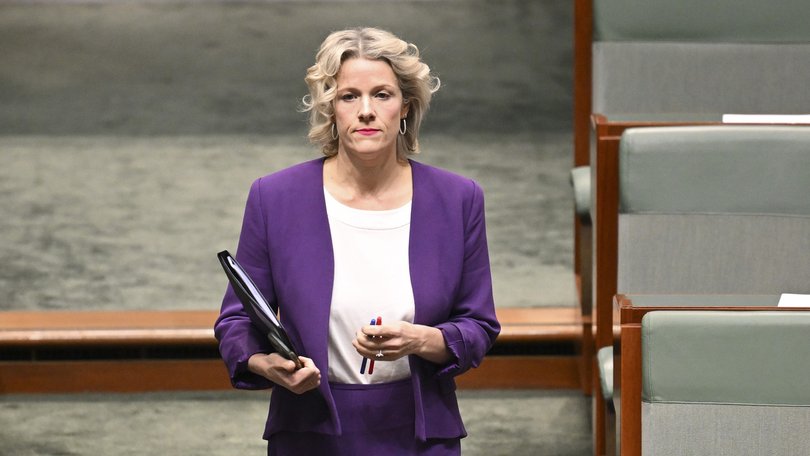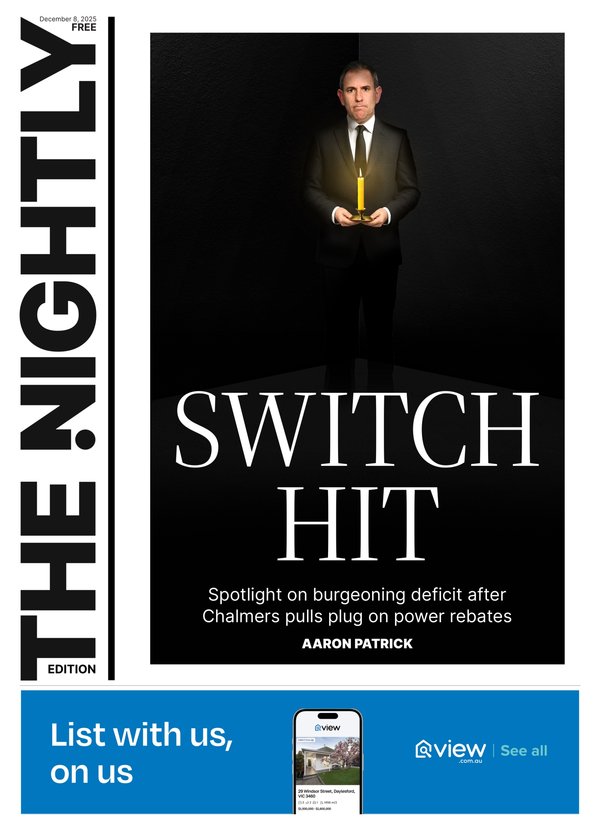Experts cast doubt on Australia’s ‘aspirational’ new 1.2 million housing target

Housing Minister Clare O’Neil is now emphasising the 1.2 million homes target is a “national aspiration” in a softening of the government’s language since the election.
The shift comes as experts and Treasury cast doubt on whether building that many homes is achievable in the timeframe.
Across Australia, about 178,700 new homes were built in 2024-25, the first year of the five-year national housing accord that set the target.
Sign up to The Nightly's newsletters.
Get the first look at the digital newspaper, curated daily stories and breaking headlines delivered to your inbox.
By continuing you agree to our Terms and Privacy Policy.That falls 61,300 short of the average number needed to be built each year to hit the goal by mid-2029.
Ms O’Neil said on Friday she was doing all she could as minister “to make sure that we meet the target or get as close to it as we can”, while repeatedly calling it a “national aspiration”.
She made similar comments in June, but not during the election campaign.
It echoes language in the National Housing Accord signed by Premiers and the Prime Minister in 2022.
They agreed to “an initial, aspirational national target of delivering a total of one million new, well-located homes over five years from 2024”. It lifted to 1.2 million a year later.
“We’ve got a housing crisis that’s been cooking in our country for 40 years, and whatever debates there may be about housing policy, one thing is for absolute certain, the real answer to the housing challenges facing our country is to build, build, build,” Ms O’Neil said.
“We’ve got to build more homes more quickly, because more housing means more affordable housing for Australians.”
The federal view is that there needs to be a massive, collective push from all levels of government if Australia is to get close to meeting the 1.2 million home target, since it’s more than has ever been built in any five-year period.
The closest was in the five years to the end of 2019, when almost 1.05 million homes were built, analysis from property data firm Cotality found.
However, its head of research Eliza Owen pointed out that in that period, interest rates were far lower, more units were being approved, and investors made up a bigger proportion of demand.
Treasury advice has also cast doubt on whether the target will be met.
Government data shows the number of homes built increased by 2 per cent in 2023-24 compared with the year prior.
If that growth rate continues over the next five years, the nation will build just under 930,000 new homes — suggesting growth needs to speed up considerably to reach the 1.2 million stretch goal.
The Commonwealth is directly funding the construction of 55,000 social and affordable homes (28,000 of which are currently in planning or construction) and 100,000 properties reserved for first-time buyers, to contribute to the 1.2 million target.
Properties built by Defence Housing Australia, such as the hundreds under construction near Rockingham to accommodate an influx of families related to AUKUS, will also count towards it.
“(The target) is bold, it’s ambitious, but I can tell you that that’s exactly what’s needed,” Ms O’Neil told Radio National.
“We’ve got to get states, territories, local government and the private sector working together better on housing, and that’s the reason why we’ve got this target in place.
“Having a big, difficult target is exactly the kind of thinking that is going to need to snap us out of what is a 40-year-old problem confronting our country.”
The Federal government is acutely aware it doesn’t hold the planning levers and is reliant on state and local governments.
It also sees the need for a cultural shift to counter the NIMBYism, where neighbours in established suburbs can hold up developments – including the one Ms O’Neil used for a media appearance on Friday morning – by pursuing objections through local councils and courts.
The minister met local governments on Wednesday as part of the pre-roundtable discussions and will also speak with her state and territory counterparts.
Cotality’s Eliza Owen said policies aimed at pre-fabricated construction and labour mobility sounded like they would be heading in the right direction, although could come with added costs.
She pointed to the increase in dwelling approvals in June, particularly for units, as a sign things were speeding up.
“A combination of the right policy action and lower interest rates will help increase dwelling completions,” she told The Nightly.
Approvals were up 11.9 per cent in June, and 27.4 per cent on the year earlier. Building starts were also up 17 per cent in the March quarter compared to 12 months earlier.
Ms Owen argued that speeding up approvals was not necessarily the main game in fixing the problem, because it appeared to be adding to an already packed pipeline of projects.
But she cautioned that history showed “you can’t just look at the supply side” without controlling demand.
“We allowed a lot of that new demand (leading up to 2019) to be investment, off-the-plan apartment sales,” she said.
“And while that’s not inherently a bad thing in itself, it did see a decline in the rate of home ownership, corners cut on dwelling construction, and pretty poor return for those investors over the long term.”
Shadow housing minister Andrew Bragg accused Ms O’Neil of seeking to pre-emptively shift blame if the target wasn’t met.
“The Labor Government promised to build 1.2 million homes by July 1, 2029. If they don’t, they can’t blame it on the States or the RBA. They will have lied to the Australian public,” he said.

